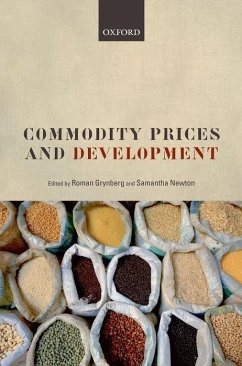
The Development of Potential Commodity Based Agrotourism in Around Mt. Wilis
Versandkostenfrei!
Versandfertig in 1-2 Wochen
12,99 €
inkl. MwSt.

PAYBACK Punkte
6 °P sammeln!
This book describes the role/support of the local government in developing potential commodity-based agro-tourism. At least two policies serve as indicators for the role of agro-tourism local governments in developing potential commodity based agro-tourism. They are (1) the Master Plan for Tourism Development of agro-tourism villages 2019-2034 as outlined in the form of Regency Regional Regulation Number 2 of 2020; and (2) Review of the Agropolitan Master Plan for agro-tourism villages (2019). Meanwhile, the role or support of the local government for agro-tourism in developing potential commo...
This book describes the role/support of the local government in developing potential commodity-based agro-tourism. At least two policies serve as indicators for the role of agro-tourism local governments in developing potential commodity based agro-tourism. They are (1) the Master Plan for Tourism Development of agro-tourism villages 2019-2034 as outlined in the form of Regency Regional Regulation Number 2 of 2020; and (2) Review of the Agropolitan Master Plan for agro-tourism villages (2019). Meanwhile, the role or support of the local government for agro-tourism in developing potential commodity-based agro-tourism in the Selingkar Wilis area includes (1) Master Plan for Tourism Development in the Agro-tourism area and (2) Master Plan for Development of Agropolitan Areas. The concept of marketing strategy used in the development of the Selingkar Wilis Agrotourism is the concept of a rural tourism destination. Thus, the idea of a tourism village marketing strategy is appropriate to apply. The tourism village marketing strategy is P8M, which includes: Product, Price, Place, Promotion, People, Physical evidence, Process, Partnership, and Marketing Choice (Raharjo, 2021)














